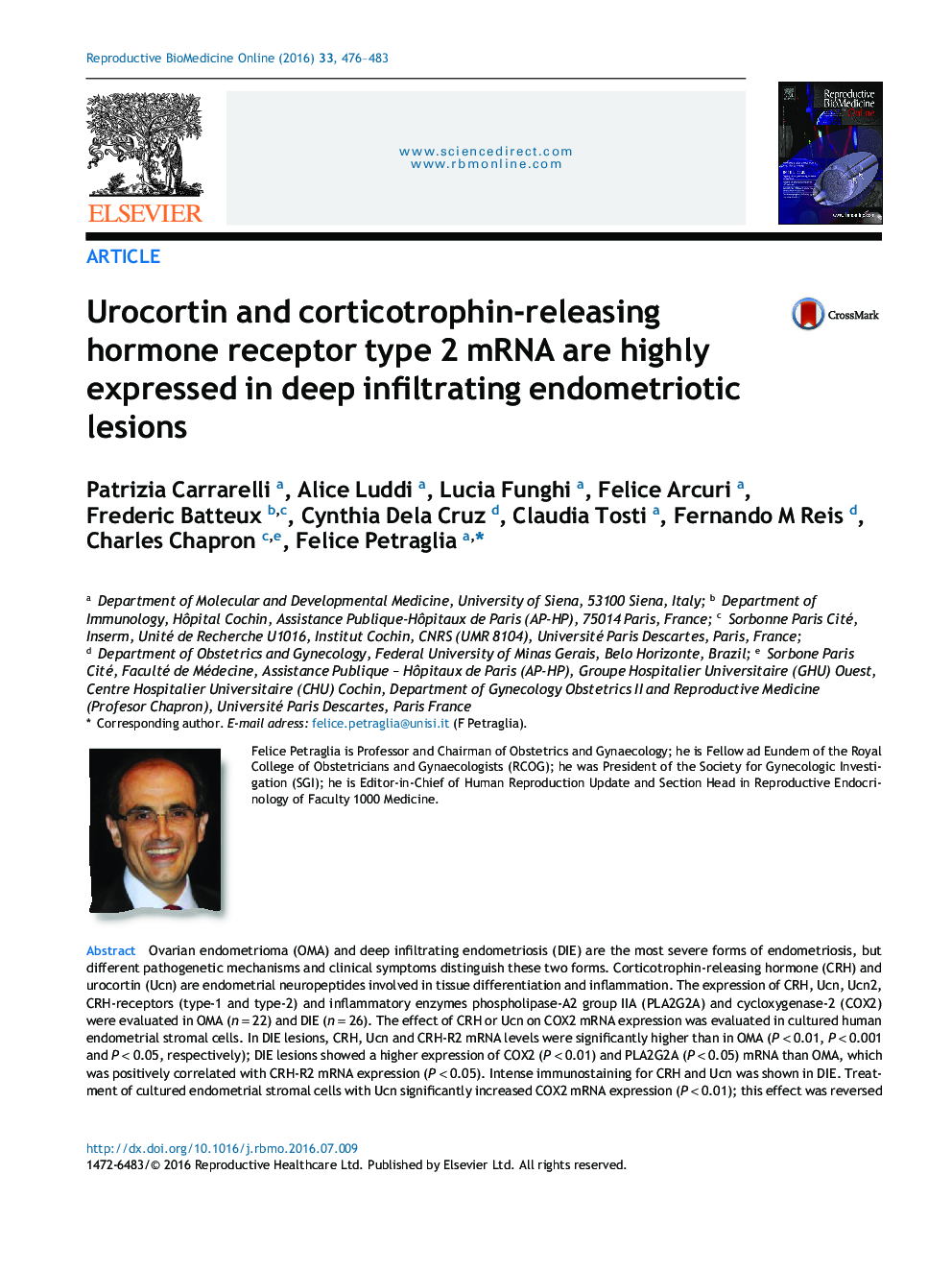| Article ID | Journal | Published Year | Pages | File Type |
|---|---|---|---|---|
| 5696746 | Reproductive BioMedicine Online | 2016 | 8 Pages |
Abstract
Ovarian endometrioma (OMA) and deep infiltrating endometriosis (DIE) are the most severe forms of endometriosis, but different pathogenetic mechanisms and clinical symptoms distinguish these two forms. Corticotrophin-releasing hormone (CRH) and urocortin (Ucn) are endometrial neuropeptides involved in tissue differentiation and inflammation. The expression of CRH, Ucn, Ucn2, CRH-receptors (type-1 and type-2) and inflammatory enzymes phospholipase-A2 group IIA (PLA2G2A) and cycloxygenase-2 (COX2) were evaluated in OMA (n = 22) and DIE (n = 26). The effect of CRH or Ucn on COX2 mRNA expression was evaluated in cultured human endometrial stromal cells. In DIE lesions, CRH, Ucn and CRH-R2 mRNA levels were significantly higher than in OMA (P < 0.01, P < 0.001 and P < 0.05, respectively); DIE lesions showed a higher expression of COX2 (P < 0.01) and PLA2G2A (P < 0.05) mRNA than OMA, which was positively correlated with CRH-R2 mRNA expression (P < 0.05). Intense immunostaining for CRH and Ucn was shown in DIE. Treatment of cultured endometrial stromal cells with Ucn significantly increased COX2 mRNA expression (P < 0.01); this effect was reversed by the CRH-R2 antagonist astressin-2B. In DIE, DIE lesions highly express neuropeptide and enzyme mRNAs, supporting a strong activation of inflammatory pathways.
Related Topics
Health Sciences
Medicine and Dentistry
Obstetrics, Gynecology and Women's Health
Authors
Patrizia Carrarelli, Alice Luddi, Lucia Funghi, Felice Arcuri, Frederic Batteux, Cynthia Dela Cruz, Claudia Tosti, Fernando M. Reis, Charles Chapron, Felice Petraglia,
